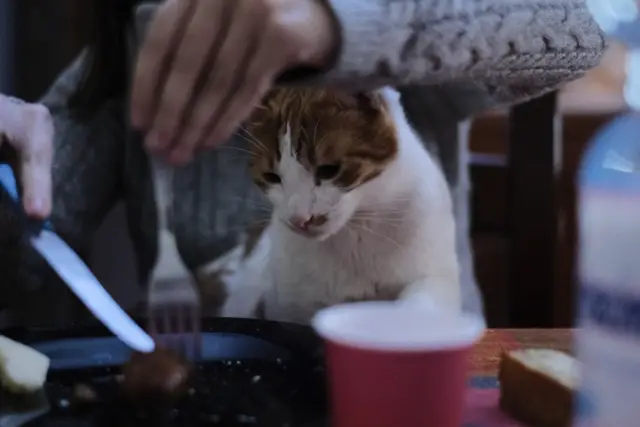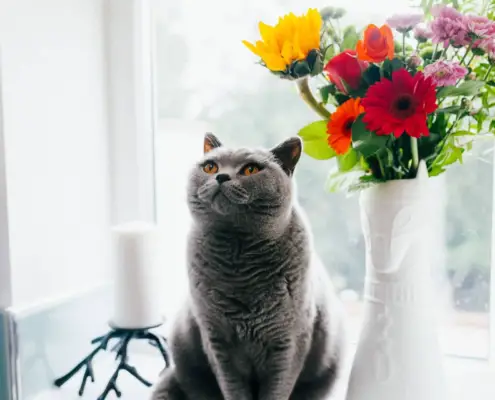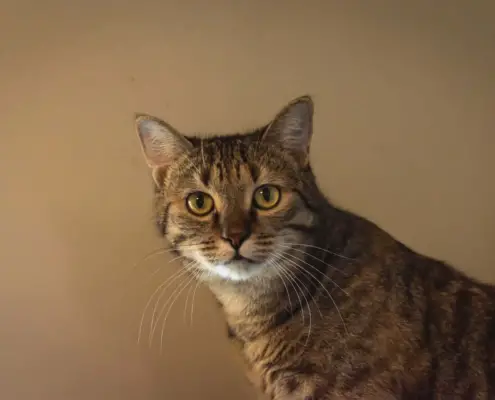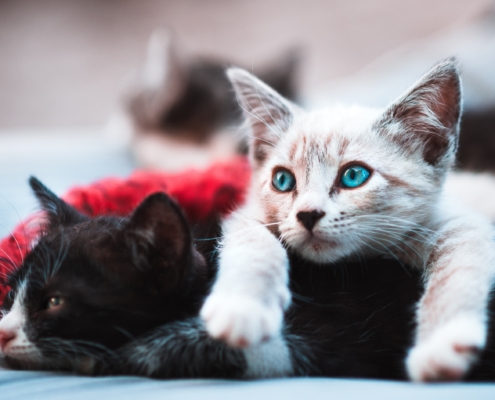
Cats are known for their independent nature, but when it comes to their feeding routine, structure and consistency are key. Establishing a proper feeding routine for your cat is essential for their overall health and well-being. A consistent feeding schedule can help prevent obesity, regulate digestion, and even improve their behavior.
A proper feeding routine ensures that your cat is getting the right amount of nutrients and calories they need to maintain a healthy weight. Overfeeding can lead to weight gain and obesity, which can put your cat at risk for various health issues such as diabetes, joint problems, and heart disease. On the other hand, underfeeding can result in malnutrition and poor growth. By establishing a regular feeding routine, you can ensure that your cat is getting the appropriate amount of food to meet their nutritional needs.
In addition to maintaining a healthy weight, a proper feeding routine can also help regulate your cat’s digestion. Cats have sensitive stomachs, and irregular feeding patterns can disrupt their digestive system, leading to issues such as diarrhea or constipation. By feeding your cat at regular intervals, you can promote healthy digestion and prevent gastrointestinal problems.
Understanding the different eating patterns for cats
Cats have different eating patterns, and it’s important to understand these patterns in order to establish the right feeding routine for your furry friend. There are three main eating patterns for cats: free-feeding, scheduled feeding, and grazing feeding.
Free-feeding vs. scheduled feeding
Free-feeding, also known as ad libitum feeding, involves leaving food out for your cat to eat whenever they want. This method allows your cat to eat at their own pace and satisfy their hunger whenever they feel like it. While free-feeding may be convenient for busy cat owners, it can lead to overeating and weight gain if not monitored closely. It is important to measure the amount of food you leave out and adjust accordingly to prevent overfeeding.
Scheduled feeding, on the other hand, involves feeding your cat at specific times throughout the day. This method allows you to control the amount of food your cat consumes and ensures that they are getting a balanced diet. Scheduled feeding can be beneficial for cats who tend to overeat or have specific dietary requirements. It also allows you to monitor your cat’s appetite and detect any changes in their eating habits, which can be an early sign of illness.
Meal feeding: how to establish a mealtime routine for your cat
Meal feeding involves providing your cat with a specific amount of food at designated meal times. This method allows you to control your cat’s portion sizes and ensure that they are getting all the nutrients they need. To establish a mealtime routine for your cat, start by determining the appropriate portion size for their age, weight, and activity level. Divide this portion into two or three meals a day, depending on your cat’s preference and schedule. Serve the meals at the same time every day, and remove any uneaten food after 20-30 minutes to prevent spoilage.
Grazing feeding: pros and cons of allowing your cat to graze throughout the day
Grazing feeding, also known as free-choice feeding, involves leaving food out for your cat to eat throughout the day. This method allows your cat to graze and eat small amounts of food at their own pace. While grazing feeding may be convenient for some cat owners, it has its pros and cons.
One of the benefits of grazing feeding is that it mimics a cat’s natural hunting and feeding behavior. Cats in the wild would typically catch small prey throughout the day and eat as they please. Grazing feeding can also be beneficial for cats who are picky eaters or have a history of weight loss. It allows them to eat small, frequent meals and helps ensure that they are getting enough calories to maintain their weight.
However, one of the drawbacks of grazing feeding is that it can lead to overeating and weight gain if not monitored closely. Cats who have unlimited access to food may eat more than they need, leading to obesity and its associated health issues. It can also make it difficult to monitor your cat’s appetite and detect any changes in their eating habits. If you choose to allow your cat to graze, it’s important to measure the amount of food you leave out and adjust accordingly to prevent overfeeding.
Intermittent fasting for cats: benefits and considerations
Intermittent fasting is a feeding pattern that involves alternating between periods of fasting and periods of eating. While it is commonly practiced by humans for weight loss and health benefits, intermittent fasting can also be beneficial for cats.
Intermittent fasting for cats involves restricting their access to food for a certain period of time, usually overnight. This allows their digestive system to rest and helps regulate their metabolism. Intermittent fasting has been found to promote weight loss, improve insulin sensitivity, and increase longevity in cats. It can also help prevent obesity and reduce the risk of diseases such as diabetes and cancer.
However, it’s important to note that not all cats are suitable candidates for intermittent fasting. Kittens, pregnant or nursing cats, and cats with certain medical conditions may not be able to tolerate fasting. It’s always best to consult with your veterinarian before implementing any fasting regimen for your cat to ensure that it is safe and appropriate for their individual needs.
Feeding multiple cats: tips for managing different eating patterns in a multi-cat household
If you have multiple cats with different eating patterns, managing their feeding routines can be a challenge. Here are some tips to help you navigate feeding multiple cats in a multi-cat household:
- Separate feeding areas: Provide each cat with their own designated feeding area to prevent competition and ensure that they can eat in peace. This can help reduce stress and prevent one cat from stealing another’s food.
- Monitor portion sizes: If you have cats with different dietary needs, it’s important to monitor their portion sizes to prevent overfeeding or underfeeding. Use separate bowls or feeders for each cat and measure their food accordingly.
- Scheduled feeding: Consider implementing a scheduled feeding routine for all your cats. This can help establish a sense of routine and ensure that each cat is getting their fair share of food. Divide their meals into separate bowls and serve them at the same time every day.
- Supervise mealtime: If you have cats with different eating speeds, supervise their mealtime to ensure that each cat finishes their food before allowing them access to the rest of the house. This can prevent one cat from eating too quickly and stealing another’s food.
- Feed in separate rooms: If your cats have very different eating patterns and cannot eat together peacefully, consider feeding them in separate rooms. This can help prevent competition and allow each cat to eat at their own pace.
The role of food puzzles and interactive feeders in promoting healthy eating patterns
Food puzzles and interactive feeders are excellent tools for promoting healthy eating patterns in cats. These devices provide mental stimulation and encourage cats to work for their food, which can help prevent boredom and overeating.
Food puzzles are toys or devices that require cats to solve a puzzle or manipulate objects to access their food. They come in various shapes and designs, including treat balls, puzzle feeders, and slow feeders. Food puzzles not only slow down a cat’s eating pace but also provide mental stimulation and promote natural hunting and foraging behaviors.
Interactive feeders, on the other hand, are specially designed feeding bowls or mats that require cats to use their paws or tongues to access their food. These feeders can help slow down a cat’s eating speed and prevent gulping, which can lead to digestive issues. Interactive feeders also provide a fun and engaging way for cats to eat their meals, making mealtime more enjoyable for them.
Introducing food puzzles and interactive feeders to your cat’s feeding routine can help prevent boredom, promote healthy eating habits, and provide mental stimulation. Start by offering small portions of their meals in these devices and gradually increase the difficulty level as your cat becomes more comfortable and adept at using them.
Common feeding issues and how to address them
While establishing a proper feeding routine is important for your cat’s health, it’s not always without its challenges. Here are some common feeding issues and how to address them:
1.Finicky eaters: Some cats can be picky eaters and may refuse certain types of food. If your cat is a finicky eater, try offering a variety of flavors and textures to find what they prefer. You can also try warming up their food or adding a small amount of broth to make it more enticing.
2.Overeating: If your cat tends to overeat or inhale their food too quickly, consider using a slow feeder or food puzzle to slow down their eating pace. This can help prevent digestive issues and promote healthy eating habits.
3.Food aggression: Food aggression can be a common issue in multi-cat households. If one of your cats displays food aggression, try feeding them in separate rooms or using feeding stations to prevent competition and reduce stress.
4.Weight management: If your cat is overweight or obese, it’s important to address their weight management through proper portion control and regular exercise. Consult with your veterinarian for a tailored weight loss plan that suits your cat’s individual needs.
5.Medical conditions: Cats with certain medical conditions, such as diabetes or kidney disease, may require a special diet or feeding regimen. It’s important to work closely with your veterinarian to develop a feeding routine that meets your cat’s specific dietary needs.
Finding the right feeding routine for your cat
Establishing a proper feeding routine is essential for your cat’s health and well-being. By understanding the different eating patterns for cats and considering their individual needs, you can find the right feeding routine that works for your furry friend. Whether it’s scheduled feeding, grazing feeding, or intermittent fasting, the key is to provide a balanced diet, monitor portion sizes, and promote healthy eating habits. Remember to consult with your veterinarian for personalized advice and guidance on your cat’s feeding routine. With a consistent and structured feeding routine, you can ensure that your cat is happy, healthy, and well-nourished.
If you’re unsure about the right feeding routine for your cat, consult with your veterinarian for personalized advice and guidance. They can help you develop a feeding plan that meets your cat’s specific needs and ensures their overall health and well-being.
If you enjoyed my article, I would appreciate you sharing it with your network.

Sima Ndlebe
Sima writes for CatBuzz. He is interested in Cats, Health and Fitness, and Entrepreneurship.
Published: 16 November 2023
Related Articles
Disclaimer
The content found on CatBuzz.org is presented on an "as is" basis and is intended for general consumer information and education purposes only. Any utilization of this information is voluntary and solely at the user's own risk.
None of the articles or content should be regarded as, or used in place of, veterinary medical advice, diagnosis, or treatment. The information provided on the website is purely for educational and informational intentions and should not be considered a substitute for professional guidance from a veterinarian or other qualified expert. The articles are designed to inform consumers about veterinary healthcare and medical matters that may impact their cat's daily life. It should be noted that this website and its services do not constitute the practice of any form of veterinary medical advice, diagnosis, or treatment. CatBuzz.org explicitly disclaims any liability for any direct or indirect damages or losses that may arise from the use of or reliance on the information contained within the content.
Consumers must consult a veterinarian, veterinary specialist, or another qualified veterinary healthcare provider when seeking advice regarding their cat's health or medical conditions. It is important not to ignore, avoid, or postpone seeking medical advice from a veterinarian or other qualified veterinary healthcare provider solely based on information obtained from this website. If you believe that your cat may be experiencing a medical issue or condition, it is imperative to promptly contact a qualified veterinary healthcare professional.




